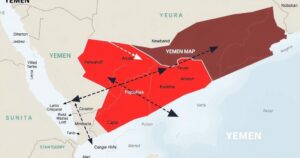U.S. Travel Advisory Levels Rising: A Closer Look at High-Risk Destinations

The U.S. Department of State has imposed Level 4 travel advisories on several countries, including Afghanistan, Venezuela, and Lebanon, citing security concerns due to crime and political instability. As spring break approaches, American travelers are urged to reconsider plans to these destinations. The advisories emphasize the risks travelers might face, prompting the travel industry to adapt to changing safety landscapes.
In a recent update, the U.S. Department of State has elevated travel advisories for numerous popular destinations in Latin America and the Caribbean, including Russia, Jamaica, Colombia, Belarus, Yemen, Syria, the Dominican Republic, Congo, Afghanistan, Mexico, Burundi, the Bahamas, Lebanon, the Central African Republic, Iraq, Ukraine, Venezuela, Haiti, Iran, Myanmar, South Sudan, Mali, Burkina Faso, and North Korea. These advisories range from Level 3 (Reconsider Travel) to the more stringent Level 4 (Do Not Travel), driven by mounting concerns over crime, political instability, gang violence, and terrorism.
Historically, these regions have attracted millions of American travelers, recognized for their cultural wealth, scenic beaches, and lively nightlife. However, the latest advisories highlight a deteriorating security environment posing risks to both locals and tourists alike. Increased reports of violent crimes, such as armed robberies and kidnappings, coupled with civil unrest in popular areas, have incited urgent safety recommendations from the U.S. government.
The Level 4 advisory indicates severe safety and security issues, issued when the U.S. authorities consider the risks too high due to ongoing conflict or instability. As of February 2025, various countries remain under such advisories, underscoring the escalating dangers across global regions, from the Middle East and Africa to Eastern Europe, thus prompting American citizens to reassess their travel plans.
The U.S. travel advisory system employs a color-coded framework to convey the safety of international destinations, consisting of four levels. A Level 4 notice is typically associated with escalating violence and governance challenges that pose immediate threats to visitors.
Countries currently under a Level 4 advisory include: Afghanistan, where ongoing conflict, particularly due to the Taliban resurgence, has created a perilous environment for travelers, marked by kidnappings and bombings. The U.S. government strongly discourages any travel here, pointing to the lack of emergency services.
The Democratic Republic of the Congo (DRC) has seen years of conflict, especially in its eastern regions, with armed militias engaging in violence and kidnappings. The inadequacies in law enforcement and infrastructure complicate travel safety, resulting in strong advisories against travel.
Lebanon faces political instability, an economic crisis, and protests that create unsafe conditions for visitors. The U.S. government advises against travel due to the risk of violence and potential terrorist activities, especially near the border with Syria.
The Central African Republic continues to suffer from armed conflict, creating a high risk of violence and abduction. The U.S. strongly advises against travel due to lack of safety and healthcare resources.
Travel to Belarus poses threats of political repression and potential harassment of American citizens amid ongoing conflict involving Russia and Ukraine. Caution is urged as U.S. diplomatic relations in the region are limited.
Iraq remains high-risk due to the presence of armed groups and continued terrorist threats. Despite some stabilization, security remains precarious, particularly outside Baghdad.
Ukraine is under a Level 4 advisory due to conflict-related dangers following the Russian invasion, with American citizens warned to refrain from visiting amid possible combat zones.
Venezuela’s political and economic turmoil poses multiple risks, including violent crime and human rights abuses, leading to travel advisories discouraging visits.
Similarly, Haiti is suffering from widespread gang violence and political instability that exacerbate the dangers for travelers. U.S. citizens face significant threats including kidnapping.
In Iran, ongoing political turmoil places American citizens at risk of detention and harsh treatment. The U.S. government continues to issue a Level 4 advisory for the country due to these safety risks.
The countries classified under Level 4 advisories share notable traits: conflicts, instability, and violence, presenting danger to travelers. Awareness of the advisories is critical, as some travelers may still consider visiting these locales, often unaware of the severity or ignoring the warnings.
For those contemplating travel to such high-risk areas, adherence to safety measures is paramount. Recommended precautions include consulting the U.S. State Department’s travel advisory website, enrolling in the Smart Traveler Enrollment Program (STEP), acquiring comprehensive travel insurance, and maintaining connection with local embassies. Ultimately, the gravity of the circumstances necessitates travelers to assess risks and decide judiciously regarding their safety.
The rising number of Level 4 advisories profoundly impacts the travel industry and its stakeholders. Airlines, travel agencies, and tour operators must remain informed on shifting security landscapes to provide accurate travel advice. Moreover, an anticipated rise in demand for travel insurance that covers emergencies is likely as travelers become more cautious.
As the spring break season nears, U.S. travelers should be mindful of the increasing dangers these advisories highlight. The U.S. travel advisory system emphasizes the vital importance of safety and informed decision-making. Consequently, travelers should stay vigilant and conduct careful planning to ensure a secure and enjoyable experience in their chosen destinations.
The U.S. Department of State’s Level 4 travel advisories reflect rising security concerns across numerous global destinations, particularly in Latin America and the Caribbean. It is essential for travelers to utilize these advisories to inform their travel plans and ensure their safety amid increasing risks. The travel industry will likely adapt to these advisories, and it is critical for tourists to remain informed, plan judiciously, and prioritize their security when traveling during the upcoming spring break season.
Original Source: www.travelandtourworld.com








